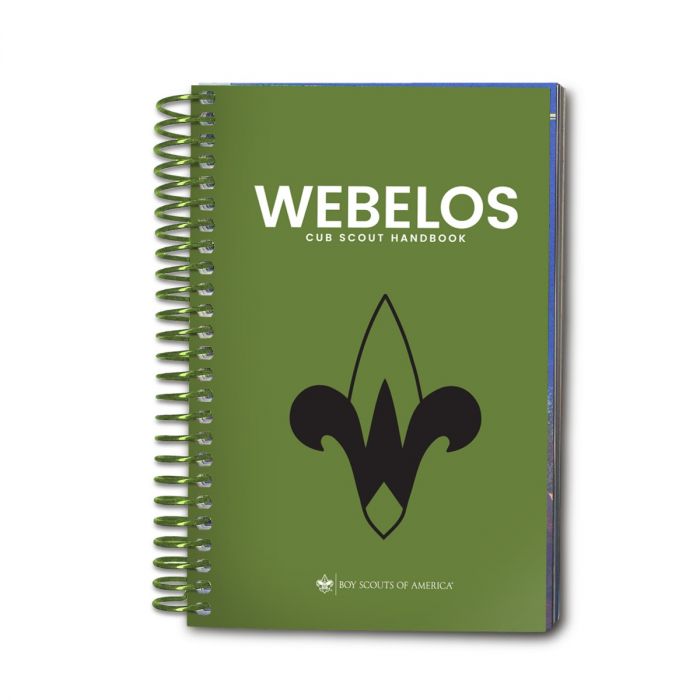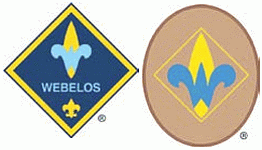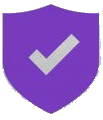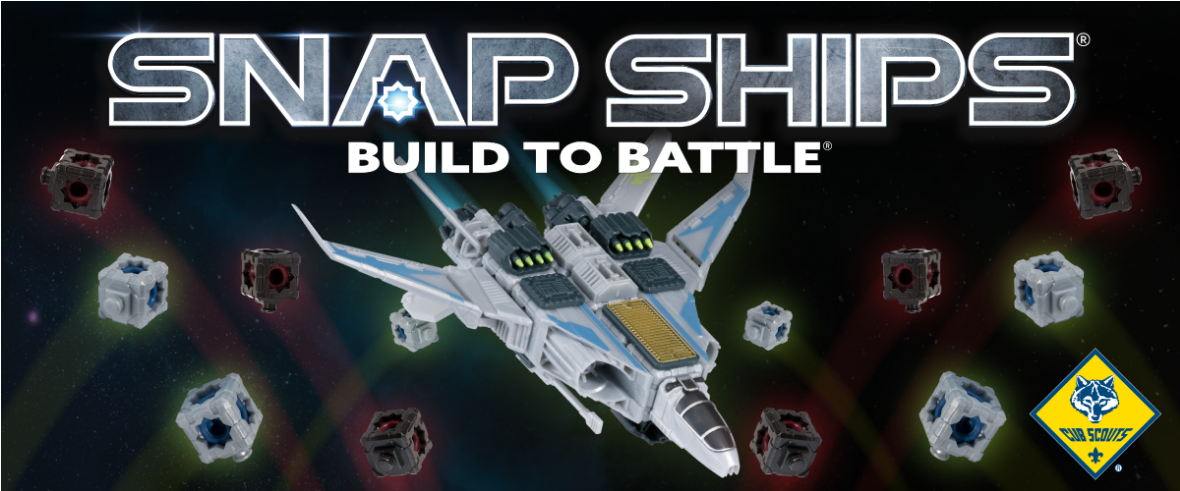Become A Sponsor
|
Why Ads
 |


Webelos and Arrow of Light
Elective Adventure Requirements
|
Requirements were
REVISED
effective
June 1, 2022.
To see the changes which were made,
Click here.
For the previous requirements,
Click here.
There are 11 Elective Adventures plus 3 Preview Adventures, which can
be earned as electives in the Webelos and Arrow of Light programs. The Protect
Yourself Rules preview adventure can also be earned for requirement 5.
Preview Adventures:
 |
Complete Requirements 1-4 and at least two others.
- State the safety precautions you need to take before doing
any water activity.
- Discuss the importance of learning the skills you need to
know before going boating.
- Explain the meaning of “order of rescue” and demonstrate
the reach and throw rescue techniques from land.
- Attempt the BSA swimmer test.
- Demonstrate the precautions you must take before attempting
to dive headfirst into the water, and attempt a front surface
dive.
- Learn and demonstrate two of the following strokes: crawl,
sidestroke, breaststroke, or elementary backstroke.
- Invite a current or former lifeguard, or member of a rescue
squad, the U.S. Coast Guard, U.S. Navy, or other armed forces
branch who has had swimming and rescue training to your den
meeting. Find out what training and other experiences this person
has had.
- Demonstrate how to correctly fasten a life jacket that is
the right size for you. Jump into water over your head. Swim
25 feet wearing the life jacket. Get out of the water, remove
the life jacket, and hang it where it will dry.
- If you are a qualified swimmer, select a paddle of the proper
size, and paddle a canoe with an adult’s supervision.
|
 |
Complete Requirements 1-3. Requirement 4 is optional.
- Visit an art museum, gallery, or exhibit. Discuss with an
adult the art you saw. What did you like?
- Create two self-portraits using two different techniques,
such as drawing, painting, printmaking, sculpture, and computer
illustration.
- Do two of the following:
- Draw or paint an original picture outdoors, using the
art materials of your choice.
- Use clay to sculpt a simple form.
- Create an object using clay that can be fired, baked
in the oven, or air-dried.
- Create a freestanding sculpture or mobile using wood,
metal, papier-mâché, or found or recycled objects.
- Make a display of origami or kirigami projects.
- Use a computer illustration or painting program to create
a work of art.
- Create an original logo or design. Transfer the design
onto a T-shirt, hat, or other object.
- Using a camera or other electronic device, take at least
10 photos of your family, a pet, or scenery. Use photo-editing
software to crop, lighten or darken, and change some of
the photos.
- Create a comic strip with original characters. Include
at least four panels to tell a story centered on one of
the points of the Scout Law. Characters can be hand-drawn
or computer-generated.
- Choose one of the following methods to show your artwork:
- Create a hard-copy or digital portfolio of your projects.
Share it with your family and members of your den or pack.
- Display your artwork in a pack, school, or community
art show.
|
 |
Complete the following requirements.
- Develop an awareness of the challenges of the blind or visually
impaired through participation in an activity that simulates
blindness or visual impairment. Alternatively, participate in
an activity that simulates the challenges of being deaf or hard
of hearing.
- Engage in an activity that simulates mobility impairment.
Alternatively, take part in an activity that simulates dexterity
impairment.
- With your den, participate in an activity that focuses on
the acceptance of differences in general.
- Do two of the following:
- Do a Good Turn for residents at a skilled nursing facility
or retirement community.
- Invite an individual with a disability to visit your
den, and discuss what activities he or she currently finds
challenging or found challenging in the past.
- Attend a disabilities event such as a Special Olympics
competition, an adaptive sports event, a performance with
sign language interpretation, or an activity with service
dogs. Tell your den what you thought about the experience.
- Talk to someone who works with people who have disabilities.
Ask what that person does and how he or she helps people
with disabilities.
- Using American Sign Language, sign the Scout Oath.
- With the help of an adult, contact a service dog organization,
and learn the entire process from pup training to assignment
to a client.
- Participate in a service project that focuses on a specific
disability.
- Participate in an activity with an organization whose
members are disabled
|
 |
Complete the following requirements.
- Learn about some basic tools and the proper use of each
tool. Learn about and understand the need for safety when you
work with tools.
- With the guidance of your Webelos den leader, parent, or
guardian, select a carpentry project and build it.
- List the tools that you use safely as you build your project;
create a list of materials needed to build your project. Put
a checkmark next to the tools on your list that you used for
the first time.
- Learn about a construction career. With your Webelos den
leader, parent, or guardian, visit a construction site, and
interview someone working in a construction career.
|
 |
Complete the following requirements.
- Complete A. and your choice of B. or C.
- On a campout or outdoor activity with your den or family,
cook two different recipes that do not require pots and
pans.
- With the help of an adult, demonstrate one way to light
a fire without using matches.
- Using tree limbs or branches that have already fallen
or been cut, build a shelter that will protect you overnight.
- Do all of the following.
- Learn what items should be in an outdoor survival kit
that you can carry in a small bag or box in a day pack.
Assemble your own small survival kit, and explain to your
den leader why the items you chose are important for survival.
- With your den, demonstrate two ways to treat drinking
water to remove impurities.
- Discuss what to do if you become lost in the woods.
Tell what the letters “S-T- O-P” stand for. Tell what the
universal emergency signal is. Describe three ways to signal
for help. Demonstrate one of them. Describe what you can
do to help rescuers find you.
- Make a list of four qualities you think a leader should
have in an emergency and why they are important to have.
Pick two of them, and act them out for your den. Describe
how each relates to a point of the Scout Law. Describe how
working on this adventure gave you a better understanding
of the Scout motto, "Be Prepared."
|
 |
Complete the following requirements.
- Do the following:
- Explain the meaning of the word “geology.”
- Explain why this kind of science is an important part
of your world.
- Look for different kinds of rocks or minerals while on a
rock hunt with your family or your den.
- Do the following:
- Identify the rocks you see on your rock hunt. Use the
information in your handbook to determine which types of
rocks you have collected.
- With a magnifying glass, take a closer look at your
collection. Determine any differences between your specimens.
- Share what you see with your family or den.
- Do the following:
- With your family or den, make a mineral test kit, and
test minerals according to the Mohs scale of mineral hardness.
- Record the results in your handbook.
- Identify on a map of your state some geological features
in your area.
- Do the following:
- Identify some of the geological building materials used
in building your home.
- Identify some of the geological materials used around
your community
|
 |
Complete Requirements 1 and 2. Requirements 3 and 4 are optional.
- Pick one type of engineer. With the help of the Internet,
your local library, or an engineer, discover three things that
describe what that engineer does. (To use the Internet, be sure
that you have a current Cyber Chip or that you have permission
from your Webelos den leader, parent, or guardian.) Share your
findings with your Webelos den.
- Learn to follow engineering design principles by doing the
following:
- Examine a set of blueprints or specifications. Using
these as a model, prepare your own set of blueprints or
specifications to design a project.
- Using the blueprints or specifications from your own
design, complete your project. Your project may be something
useful or something fun.
- Share your project with others at a den or pack meeting.
- Explore other fields of engineering and how they have helped
form our past, present, and future.
- Pick and do two projects using the engineering skills you
have learned. Share your projects with your den, and also exhibit
them at a pack meeting.
|
 |
Complete the following requirements.
- Decide on the elements for a game.
- List at least five of the online safety rules that you put
into practice while using the Internet on your computer or smartphone.
Skip this if your Cyber Chip is current.
- Create your game.
- Teach an adult or another Scout how to play your game.
|
 |
Complete at least six of the following requirements.
- Collect and care for an “insect, amphibian, or reptile zoo.”
You might have crickets, ants, grasshoppers, a lizard, or a
toad (but be careful not to collect or move endangered species
protected by federal or state law). Study them for a while and
then let them go. Share your experience with your Webelos den.
- Set up an aquarium or terrarium. Keep it for at least a
month. Share your experience with your Webelos den by showing
them photos or drawings of your project or by having them visit
to see your project.
- Watch for birds in your yard, neighborhood, or area for
one week. Identify the birds you see, and write down where and
when you saw them.
- Learn about the bird flyways closest to your home. Find
out which birds use these flyways.
- Watch at least four wild creatures (reptiles, amphibians,
arachnids, fish, insects, or mammals) in the wild. Describe
the kind of place (forest, field, marsh, yard, or park) where
you saw them. Tell what they were doing.
- Identify an insect, reptile, bird, or other wild animal
that is found only in your area of the country. Tell why it
survives in your area.
- Give examples of at least two of the following:
- A producer, a consumer, and a decomposer in the food
chain of an ecosystem
- One way humans have changed the balance of nature
- How you can help protect the balance of nature
- Learn about aquatic ecosystems and wetlands in your area.
Talk with your Webelos den leader or family about the important
role aquatic ecosystems and wetlands play in supporting life
cycles of wildlife and humans, and list three ways you can help.
- Do ONE of the following:
- Visit a museum of natural history, a nature center,
or a zoo with your family, Webelos den, or pack. Tell what
you saw.
- Create a video of a wild creature doing something interesting,
and share it with your family and den.
|
 |
Complete Requirements 1-4 and one other.
- Identify two different groups of trees and the parts of
a tree.
- Identify four trees common to the area where you live. Tell
whether they are native to your area. Tell how both wildlife
and humans use them.
- Identify four plants common to the area where you live.
Tell which animals use them and for what purpose.
- Develop a plan to care for and then plant at least one plant
or tree, either indoors in a pot or outdoors. Tell how this
plant or tree helps the environment in which it is planted and
what the plant or tree will be used for.
- Make a list of items in your home that are made from wood
and share it with your den. Or with your den, take a walk and
identify useful things made from wood.
- Explain how the growth rings of a tree trunk tell its life
story. Describe different types of tree bark and explain what
the bark does for the tree.
- Visit a nature center, nursery, tree farm, or park, and
speak with someone knowledgeable about trees and plants that
are native to your area. Explain how plants and trees are important
to our ecosystem and how they improve our environment.
|
 |
Complete the following requirements.
- Show the signals used by officials in one of these sports:
football, basketball, baseball, soccer, or hockey.
- Participate in two sports, either as an individual or part
of a team.
- Complete the following requirements:
- Explain what good sportsmanship means.
- Role-play a situation that demonstrates good sportsmanship.
- Give an example of a time when you experienced or saw
someone showing good sportsmanship.
|

Protect Yourself Rules |
Complete each of the following:
- Watch the "Protect Yourself" video lessons for this adventure.
- Know the six Protect Yourself Rules.
- Describe what cyberbullying is and identify things you should
never tell about yourself to others when online.
- Describe three ways to get out of a situation with someone
who is making you feel unsafe.
- List five safe adults you could tell if someone has made
you feel unsafe.
Complete each of the following:
- Watch the "Protect Yourself" video lessons for this adventure.
- Know the six Protect Yourself Rules.
- Describe what cyberbullying is and identify things you should
never tell about yourself to others when online.
- Explain what you would do if you or a friend felt unsafe
at home.
- List five safe adults you could tell if someone has made
you feel unsafe.
- Name two of Scouting's Barriers to Abuse that adults are
to follow.
|

Yo-Yo |
Complete each of the following:
- Learn the safety rules of using a yo-yo and follow them
at all times.
- Using a real yo-yo string, a regular string, or a piece
of yarn, show how to find the proper yo-yo string length for
you.
- Explain why it is important to have the correct string length
and to be in the right location before throwing a yo-yo.
- Demonstrate how to properly string a yo-yo and how to create
a slip knot.
- In an area where there are no hazards or other people, conduct
the pendulum experiment with a yo-yo. Explain what happens to
the yo-yo when the string is longer.
- Show that you can properly wind a yo-yo.
- Demonstrate one of the following:
- Gravity pull
- Sleeper
- Breakaway
Complete each of the following:
- Learn the safety rules of using a yo-yo and follow them
at all times.
- Using a real yo-yo string, a regular string, or a piece
of yarn, show how to find the proper yo-yo string length for
you.
- Explain why it is important to have the correct string length
and to be in the right location before throwing a yo-yo.
- Demonstrate how to properly string a yo-yo and how to create
a slip knot.
- In an area where there are no hazards or other people, conduct
the pendulum experiment with a yo-yo. Explain what happens to
the yo-yo when the string is longer.
- Show that you can properly wind a yo-yo.
- Demonstrate TWO of the following:
- Gravity pull
- Sleeper
- Breakaway
- Elevator
|

Modular Designv |
Complete the following requirements:
- Learn what modular design is and identify three things that
use modular design in their construction.
- Identify three benefits to using modular design.
- Using modular-based building pieces, build a model from
a set of instructions.
- Using modular-based building pieces, build a model without
a set of instructions. The model may represent something real
or fictional.
- Using the model you made in requirement 4, create a set
of step-by-step instructions on how to build your model. Have
someone build your model using your instructions.
- Share your model with your den and/or family. Explain what
your model is designed to do.
- With your parent or legal guardian's permission, watch a
video demonstrating how something was built using modular design.
Complete the following requirements:
- Learn what modular design is and identify three things that
use modular design in their construction.
- Identify three benefits to using modular design.
- Using modular-based building pieces, build a model from
a set of instructions.
- Using modular-based building pieces, build a model without
a set of instructions. The model may represent something real
or fictional.
- Using the model you made in requirement 4, create a set
of step-by-step instructions on how to build your model. Have
someone build your model using your instructions.
- Share your model with your den and/or family. Explain what
your model is designed to do.
- Without building it, design a model that uses modular-based
building pieces. Create a set of step-by-step instructions.
- With your parent or legal guardian's permission, watch a
video demonstrating how something was built using modular design.
|
Page updated on:
!--webbot bot="Timestamp" s-type="REGENERATED" s-format="%B %d, %Y" -->
|






















